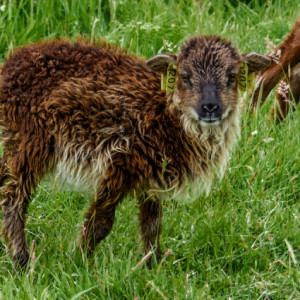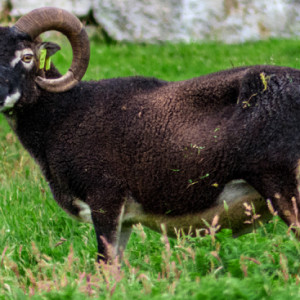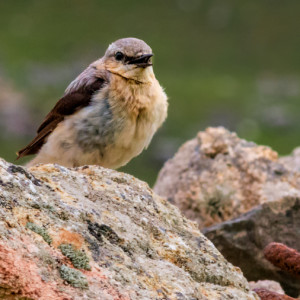The Final Day.
This was our day of departure, we had a few chores to do which didn't take take long and there were some pictures I hadn't taking and places I hadn't seen:
There are three kinds of sheep on Hirta, pregnant ewes, lambs and rams (with the latter two being in the extras). These Soay sheep shed their wool naturally so many of the adults are looking pretty scruffy. They're about the size of a small working Labrador with spindly legs and are quite nimble; they can get onto the tops of some of the smaller cleits but don't manage the bigger ones which provide safe nest sites for the “ground” nesting birds. I remember once seeing a “One Man and his Dog” special where a shepherd and his champion dog tried herding half a dozen of these animals. The Soay sheep won hands down though, having said that, these seem quite tame. I was able to get quite close to them before they would casually saunter off. During my nocturnal wanderings (to the toilet and back) they would be lying on the path, as I approached, they would quietly get out of the way but, on my return journey, they wouldn't bother.
The birds were interesting; not uncommon on the mainland, but new to me, were the wheatears and meadow pipits (third and fourth extras); both scolded me when ever I approached and, although not exactly timid, they did keep a safe distance. I had the impression they were trying to entice me away from vulnerable chicks, The wheatears tutted at me and the pipits tweeted in a manner that attracted attention. There were plenty of starlings that were probably seasonal visitors and I would imagine that a twitcher would identify many more fairly common or garden varieties.
The four inch gun (fifth extra) was made in 1896 for and mounted on a Pelorus-class cruiser but was put in place here after a visit from a U-boat in May 1918 which fired 72 shells after giving the islanders fair warning. They destroyed the target which was a naval radio station causing a small amount of collateral damage:
The manse was damaged, a lamb was killed and the scared cattle ran over to the other side of the island. The islanders looked kindly on the U-boat as the crew had behaved in civilised fashion, they could have killed the residents or destroyed their property.
I had difficulty finding the cemetery; several people gave me directions which were absolutely no help at all so, eventually, I resorted to taking a map. It was only a hundred yards away, but it was disguised as a sheep pen. Most of the tomb stones are just unadorned slabs of rock stood on end but, a few of the modern ones are standard churchyard fare. I'm sure that records exist somewhere, but why let the facts get in the way of a nice romantic story: It would appear that Malcolm MacDonald was one of the was one of the evacuees in 1930, aged 28; he subsequently married an Irish colleen, Mary Doyle, some 17 years his younger and died 48 years after leaving Hirta, finally returning to be buried here. Mary eventually died aged 91 in 2016 and came here to be buried alongside her husband. It could well be that the two stones commemorate different Malcolm MacDonalds; after all, there were few surnames on the island and the firstborn son would most likely be named after his father, but that would only change a detail rather the basic story.




Comments
Sign in or get an account to comment.


